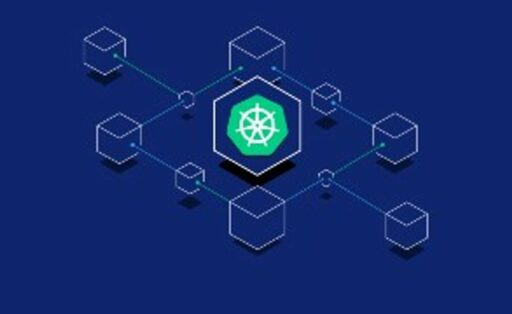Table of Contents
Data munging, also known as data wrangling, is a critical phase in the data analysis process that involves cleaning and transforming raw data into a format that is suitable for analysis. It’s a meticulous task that requires attention to detail and a deep understanding of the data at hand. In this article, ‘Unlocking the Secrets of Data Munging: Techniques and Tools for Cleaning Your Data,’ we will explore the fundamentals, techniques, tools, and best practices to master the art of data munging. By following these guidelines, you can ensure that your data is accurate, consistent, and ready for insightful analysis.
Key Takeaways
- Data munging is a crucial step in data analysis that involves cleaning and formatting data to make it suitable for analysis.
- A systematic approach to data cleaning can significantly improve the quality of data and the insights derived from it.
- Advanced data transformation techniques, such as feature engineering and handling special data types, can enhance data analysis.
- Leveraging specialized tools and automating data cleaning processes can increase efficiency and accuracy in data munging.
- Maintaining high data quality and staying updated with the latest data cleaning trends are essential for effective data analysis.
Understanding Data Munging Fundamentals

Defining Data Munging and Its Importance
Data munging, often synonymous with data wrangling, is the crucial process of transforming and mapping data from one "raw" form into another format with the intent of making it more appropriate and valuable for a variety of downstream purposes such as analytics and machine learning. The essence of data munging is to discover the hidden patterns and insights that lie dormant within the raw data.
The importance of data munging cannot be overstated. It serves as the foundation for any data-driven decision-making process. Without proper data munging, the risk of drawing incorrect conclusions from unprocessed data is high. This process ensures that data is:
- Clean and free of errors
- Structured for easy access
- Consistent in format and semantics
Data munging is not just a preliminary step; it’s a continuous necessity throughout the lifecycle of the data.
Proficiency in data munging directly correlates with the ability to efficiently handle various data-related tasks, from creating CSV files to managing SQL data types. It is also essential for specialized fields such as SEO, where data analysis can significantly impact search engine rankings, or in photography, where managing EXIF data is crucial.
The Data Cleaning Process: A Step-by-Step Guide
Data cleaning, often considered a mundane task, is a critical phase in the data analysis pipeline. The process involves a series of steps to transform raw data into a format that is suitable for analysis. It’s essential to approach this process methodically to ensure accuracy and reliability of the data.
- Data Inspection: Scrutinize the dataset for errors or anomalies.
- Data Cleaning: Rectify or remove incorrect, incomplete, or irrelevant parts of the data.
- Data Verification: Confirm that the cleaning steps have been executed correctly.
- Data Reporting: Document the cleaning process, detailing the changes made to the original dataset.
By adhering to a structured data cleaning process, analysts can minimize the risk of errors that could compromise the integrity of their analysis.
It’s important to remember that data cleaning is not a one-time event but a continuous process that requires vigilance and regular maintenance. As new data is collected and integrated, it should be subjected to the same rigorous cleaning standards.
Common Challenges in Data Preparation
Data preparation is a critical step in the data analysis process, but it comes with its own set of challenges. Ensuring data quality and consistency across different data sources can be a daunting task. Data scientists often spend a significant amount of their time addressing these issues before they can begin to extract meaningful insights.
- Data Integration: Combining data from multiple sources often leads to inconsistencies in naming conventions, data formats, and scales.
- Data Cleaning: Identifying and correcting errors and inaccuracies in the data to maintain its quality.
- Data Transformation: Converting data into a format or structure that is more suitable for analysis.
- Scalability: Handling large volumes of data efficiently without compromising on the speed or quality of data processing.
One of the most pervasive challenges is the presence of missing or incomplete data, which can significantly skew the results of an analysis if not properly addressed.
The complexity of data preparation can be particularly pronounced in the context of AI/ML projects, where the quality of the input data is paramount. Poor data preparation can prevent you from succeeding with a proof of value, highlighting the need for meticulous data management practices.
Essential Techniques for Effective Data Cleaning

Identifying and Handling Missing Values
Missing values in a dataset can significantly skew your analysis and lead to incorrect conclusions. Identifying and handling missing values is therefore a critical step in the data cleaning process. There are several strategies to deal with missing data, each with its own merits.
- Listwise deletion: Removing entire records that contain a missing value.
- Imputation: Estimating the missing values based on other available data.
- Substitution: Replacing missing values with a constant, such as the mean or median of a column.
Careful consideration of the context and the nature of the data is essential when choosing a method for handling missing values.
The choice of method can depend on the amount of missing data and the expected impact on the analysis. For instance, listwise deletion might be suitable for a dataset with minimal missing values, whereas imputation could be more appropriate for datasets with substantial but not random missing data.
Data Type Conversions and Normalization
Data type conversions and normalization are critical steps in the data cleaning process. Ensuring that each data field is of the correct type is essential for accurate analysis. For instance, dates should be in datetime format, numbers should be in numeric format, and categorical data should be in string or categorical format.
Normalization involves scaling numeric data to a standard range, often between 0 and 1, to allow for meaningful comparison across different units or magnitudes. This is particularly important when preparing data for machine learning models, which can be sensitive to the scale of input features.
Normalization techniques, such as Min-Max scaling and Z-score standardization, are commonly used to adjust the scale of data.
Here’s a quick reference for when to use each normalization technique:
| Technique | Use Case |
|---|---|
| Min-Max Scaling | When you want to preserve the original distribution without any concern for outliers. |
| Z-score Standardization | When you want to handle outliers and compare features with different units or variances. |
Outlier Detection and Treatment
Outliers can significantly skew the results of your data analysis, leading to inaccurate conclusions. Detecting and treating outliers is crucial for maintaining the integrity of your dataset.
Outlier detection methods vary, but common techniques include:
- Statistical tests (e.g., Z-score, IQR)
- Visualization tools (e.g., box plots, scatter plots)
- Proximity-based methods (e.g., DBSCAN clustering)
Once detected, you have several options for treating outliers:
- Removal, if they are due to errors or noise
- Correction, if they represent valid but extreme values
- Imputation, replacing them with estimated values
Careful consideration must be given to the context of the data before deciding on the treatment method. Outliers can sometimes be the most informative part of your dataset, revealing trends or errors that would otherwise go unnoticed.
Dealing with Duplicate Data
Duplicate data can significantly skew analysis and lead to incorrect conclusions. Identifying and removing duplicates is crucial for maintaining the integrity of your dataset. The process often involves using specific functions or methods tailored to the data management tool you are using.
For instance, in Python’s Pandas library, a common method to remove duplicates is [dataframe.drop_duplicates()](https://www.geeksforgeeks.org/python-pandas-dataframe-drop_duplicates/). This method offers a straightforward way to eliminate redundant rows based on one or more columns.
Here’s a simple example of how to use drop_duplicates() in Pandas:
df = df.drop_duplicates()
df = df.drop_duplicates(subset=['column1', 'column2'])
df = df.drop_duplicates(keep='first')
It’s important to consider the context when removing duplicates. Sometimes, what appears to be duplicate data could be valid repetitions. Always validate the uniqueness of data before deduplication.
Advanced Strategies for Data Transformation

Feature Engineering for Enhanced Analysis
Feature engineering is a critical step in the data preparation process that involves creating new features from existing ones to improve the performance of machine learning models. By leveraging domain knowledge, data scientists can transform raw data into informative features that are more predictive and relevant to the task at hand.
Effective feature engineering can significantly enhance model accuracy and interpretability. It involves techniques such as binning, one-hot encoding, and interaction features among others. For instance, consider the following table illustrating a simple feature transformation:
| Original Feature | Transformed Feature |
|---|---|
| Age | Age Group |
| Salary | Income Bracket |
| Text Reviews | Sentiment Score |
By systematically analyzing and transforming variables, data scientists can uncover hidden patterns and relationships that are not readily apparent in the raw data.
It’s important to remember that not all feature engineering is equal. Some transformations may introduce bias or overfitting, so it’s essential to validate new features with cross-validation techniques and domain expertise.
Text Data Processing and Natural Language Considerations
When dealing with text data, understanding and implementing Natural Language Processing (NLP) techniques is crucial. NLP allows computers to interpret, analyze, and derive meaning from human language in a smart and useful way. It involves a range of computational techniques for analyzing and representing naturally occurring texts at one or more levels of linguistic analysis for the purpose of achieving human-like language processing for a range of tasks or applications.
Text data processing goes beyond simple extraction of information. It encompasses the subtleties of human language, including sentiment, tone, and context, which are essential for nuanced data analysis.
Here are some key considerations when processing text data:
- Understanding the context within which the text is used.
- Identifying the sentiment expressed in the text.
- Extracting entities and relationships from sentences.
- Handling ambiguities and nuances in language.
These tasks require sophisticated algorithms and approaches that can handle the complexity and variability of human language. As such, NLP is an indispensable component of text data processing, enabling deeper insights and more accurate interpretations of textual data.
Time Series Data: Special Considerations and Techniques
Time series data presents unique challenges due to its sequential nature and the importance of temporal ordering. Handling seasonality and trends is crucial for accurate analysis and forecasting. Techniques such as differencing or decomposition can be used to stabilize the mean of a time series over time.
- Differencing: Subtracting the current value from the previous value to remove trends or seasonality.
- Decomposition: Separating the time series into trend, seasonal, and residual components.
When working with time series data, it’s also important to consider the impact of missing data points and how they can distort time-dependent relationships. Imputation methods for time series often rely on interpolation or time-based models to estimate missing values.
Ensuring the integrity of the time sequence is paramount; even a small misalignment can lead to significant errors in analysis.
Finally, the choice of the model for time series analysis, such as ARIMA, Exponential Smoothing, or machine learning algorithms, should be informed by the specific characteristics of the data, including seasonality, noise, and autocorrelation patterns.
Leveraging Tools for Efficient Data Munging

Comparing Popular Data Cleaning Tools and Libraries
In the realm of data munging, the tools and libraries you choose can make a significant difference in efficiency and effectiveness. Selecting the right tool is crucial for streamlining the data cleaning process.
When it comes to academic research, tools like OpenRefine are highly regarded for their ability to transform messy data into a more usable format. OpenRefine specializes in tasks such as data transformation and cleaning, making it a go-to choice for researchers dealing with unorganized datasets.
While many tools offer a wide range of features, it’s important to consider the specific needs of your project before making a decision.
Below is a list of some popular data cleaning tools, each with its own strengths:
- OpenRefine: Known for its user-friendly interface and strong community support.
- Pandas: A Python library that excels in data manipulation and analysis.
- Trifacta: Offers intuitive workflows for data preparation at scale.
- Talend: A robust tool for data integration and transformation.
- DataWrangler: Designed for quick and intuitive data cleaning and exploration.
Automating Data Cleaning with Machine Learning
The advent of machine learning has revolutionized the way we approach data cleaning. Machine learning algorithms can now identify patterns and anomalies in data, automating the process of cleaning and ensuring higher accuracy and efficiency. This shift towards automation not only saves time but also allows data scientists to focus on more strategic tasks.
- Rule-based systems: Traditional methods that rely on predefined rules.
- Supervised learning: Algorithms trained on labeled datasets to recognize clean data.
- Unsupervised learning: Algorithms that learn from the data without explicit labels, often used for anomaly detection.
- Reinforcement learning: Models that learn to make decisions through trial and error, optimizing the cleaning process over time.
By leveraging machine learning, businesses can streamline their data cleaning workflows, reducing the risk of human error and improving the overall quality of data.
The integration of machine learning into data cleaning tools has led to the development of sophisticated platforms that can handle complex data issues. These tools are equipped with features like predictive modeling and natural language processing, which are essential for processing large volumes of data. As the field evolves, staying abreast of the latest advancements is crucial for maintaining an edge in data munging.
Integrating Data Munging Tools into Your Workflow
Integrating data munging tools into your workflow is essential for maintaining a streamlined process of data cleaning and preparation. Selecting the right tool is crucial, as it should align with the specific needs of your data and the goals of your analysis. When considering a new tool, evaluate its features against your requirements, such as its ability to perform extensive data profiling and cleansing, conduct advanced data quality checks, and facilitate easy data mapping.
- Extensive Data Profiling and Cleansing Capabilities
- Advanced Data Quality Checks
- Easy Data Mapping
- Enhanced Connectivity
- Workflow Automation
The integration of data munging tools should not be a one-time event but an ongoing process that evolves with your data needs and the advancements in technology. Regularly review and update the tools in your arsenal to ensure they continue to meet the demands of your data projects.
Once you have selected a tool, it’s important to customize it to fit into your existing data workflows. This might involve setting up enhanced connectivity with your data sources and automating repetitive tasks to save time and reduce errors. By doing so, you can ensure that your data munging efforts are both efficient and effective.
Best Practices and Tips for Data Munging Mastery

Maintaining Data Quality Throughout the Data Lifecycle
Ensuring data quality is not a one-time event but a continuous process that spans the entire lifecycle of the data. Data quality should be monitored and maintained from collection to archiving to prevent the compounding of errors and to ensure the integrity of analyses and decisions based on the data.
- Collection: Implement validation rules to ensure accuracy at the point of entry.
- Processing: Regularly clean and standardize data to maintain consistency.
- Storage: Use structured formats and metadata to preserve context.
- Usage: Apply access controls to prevent unauthorized data manipulation.
- Archiving: Periodically review and update stored data to keep it relevant and accurate.
By embedding quality controls into each phase, organizations can minimize the risk of data decay and maximize the value of their data assets. This proactive approach to data management can significantly reduce the need for extensive cleaning and munging efforts downstream.
Documentation and Reproducibility in Data Munging
Ensuring documentation and reproducibility in data munging is crucial for maintaining the integrity and reliability of data analysis. Proper documentation involves keeping a detailed record of the data cleaning steps, transformations applied, and decisions made throughout the munging process. This practice not only facilitates collaboration among team members but also simplifies the process of revisiting and understanding the workflow at a later stage.
Reproducibility, on the other hand, is about the ability to replicate the data munging process and obtain the same results consistently. It requires a systematic approach where scripts and code are used to automate the cleaning tasks. This ensures that the process can be repeated with minimal variation, which is essential for validating the findings of data analysis.
By adhering to best practices in documentation and reproducibility, data professionals can ensure that their data munging efforts are transparent and verifiable, leading to more credible and high-quality insights.
To achieve these objectives, consider the following steps:
- Use version control systems to track changes in data and scripts.
- Write clear and concise comments in your code to explain the purpose of each function and transformation.
- Package your data munging workflows into reusable functions or modules.
- Share your data and code with peers for peer review and collaborative improvements.
Continuous Learning: Staying Updated with Data Cleaning Trends
In the ever-evolving field of data science, continuous learning is crucial for staying abreast of the latest data cleaning trends and techniques. As new challenges and datasets emerge, professionals must adapt and refine their approaches to ensure data quality and integrity.
- Subscribe to industry journals and publications.
- Participate in online forums and communities.
- Attend workshops, webinars, and conferences.
- Engage with open-source projects and contribute to collaborative platforms.
By dedicating time to continuous learning, data practitioners can leverage the collective knowledge of the community to enhance their data munging skills.
It’s also beneficial to follow case studies and research papers that provide insights into how organizations tackle data cleaning in various contexts. For instance, the title: Data Cleaning in Data Science: Process, Benefits and Tools offers a comprehensive look at the application of data cleaning techniques in real-world scenarios.
Conclusion
In the journey through the intricate landscape of data munging, we’ve explored a variety of techniques and tools that are essential for cleaning and preparing data for analysis. From understanding the importance of data quality to mastering the art of dealing with missing values, duplicates, and outliers, we’ve covered the fundamental practices that can transform raw data into a reliable resource. The tools we’ve discussed, ranging from programming languages like Python and R to specialized software such as OpenRefine and Talend, provide a powerful arsenal for tackling data cleaning challenges. As we conclude, remember that the process of data munging is as much an art as it is a science, requiring a blend of critical thinking, creativity, and technical skill. With the insights and methods shared in this article, you’re now better equipped to unlock the secrets of your data and harness its full potential for insightful, data-driven decision making.
Frequently Asked Questions
What exactly is data munging and why is it important?
Data munging, also known as data wrangling, is the process of transforming and mapping data from one raw form into another format with the intent of making it more appropriate and valuable for a variety of downstream purposes such as analytics. It is important because it ensures the quality and usability of data in decision-making.
Can you outline the basic steps involved in the data cleaning process?
The basic steps in the data cleaning process typically include: 1) Data auditing to detect anomalies and irregularities, 2) Workflow specification to define the cleaning workflow, 3) Workflow execution to perform the actual cleaning, 4) Post-processing and controlling to verify and maintain data quality.
What are some common challenges faced during data preparation?
Common challenges in data preparation include dealing with large amounts of data, missing values, inconsistent data formats, duplicate data, and the need for data integration from various sources.
How do you handle missing values in a dataset?
Missing values can be handled in several ways, such as imputing the missing values using statistical methods, using algorithms that support missing values, or discarding the records or features with missing values if they are not significant.
What are the benefits of automating data cleaning with machine learning?
Automating data cleaning with machine learning can improve the efficiency and accuracy of the data cleaning process. It can help in detecting complex patterns and anomalies that may not be apparent through manual methods, and it can adapt to new data trends over time.
What should I consider to maintain data quality throughout the data lifecycle?
To maintain data quality throughout the data lifecycle, consider implementing a robust data governance framework, regularly auditing your data, ensuring clear documentation, and employing continuous monitoring and validation techniques.





